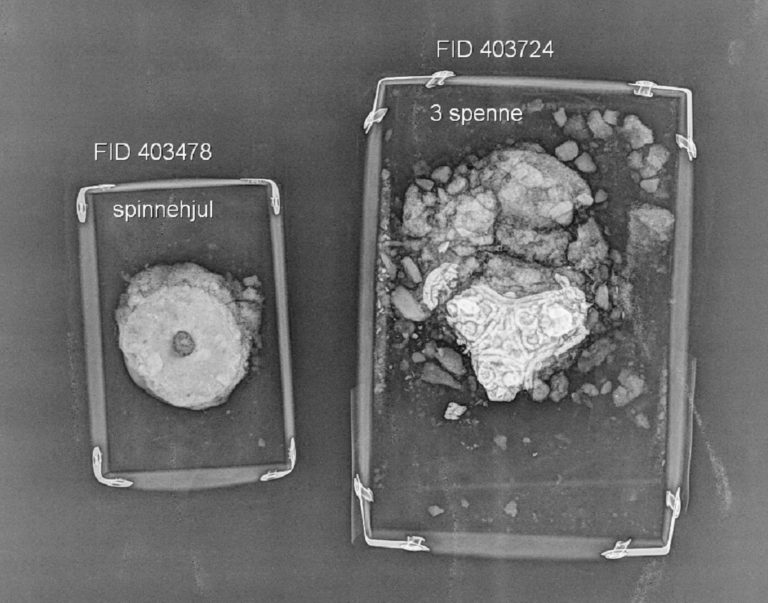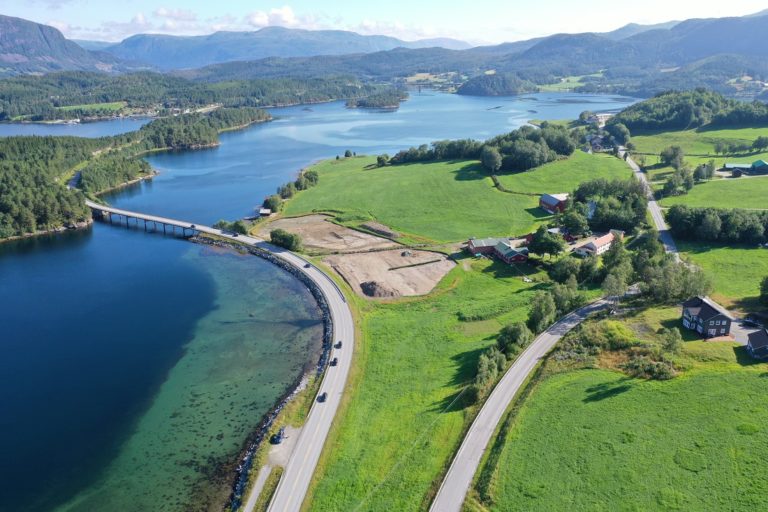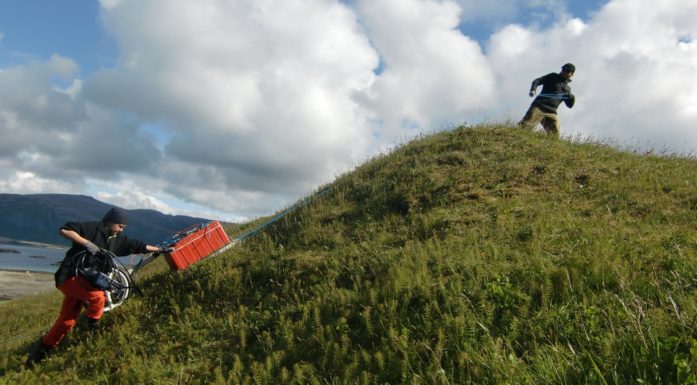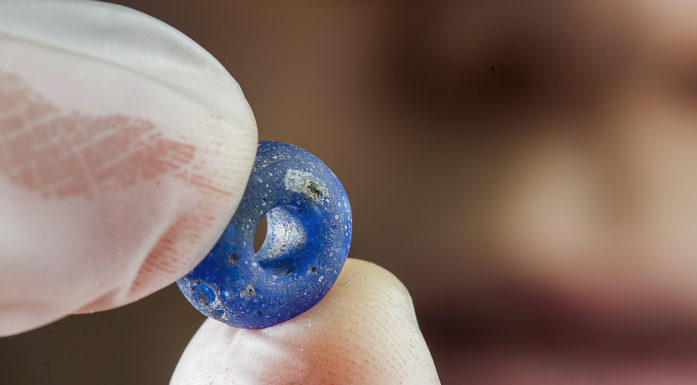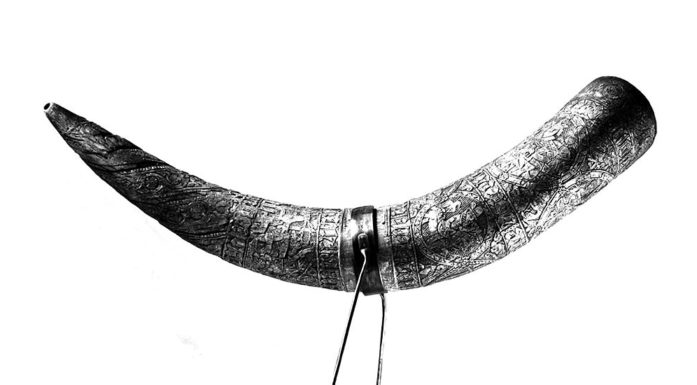Special Viking grave found in Central Norway
She was placed in a burial chamber and took several hundred miniature beads with her on her last journey. Who was the woman who was buried by Valsøyfjord over 1000 years ago?
It had been an uneventful excavation season at Hestnes in Heim municipality. After several weeks of digging, archaeologists had found nothing but some post holes and cooking pits.
When traces of some kind of rectangular construction emerged, field manager Eystein Østmoe didn’t think they had found anything exciting. On the contrary: it was most likely the remains of some modern, boring artefact.
But he changed his mind when a dark layer of soil with a greasy texture surfaced. This often signals the remains of a human body that has been lying in the ground for a very long time.
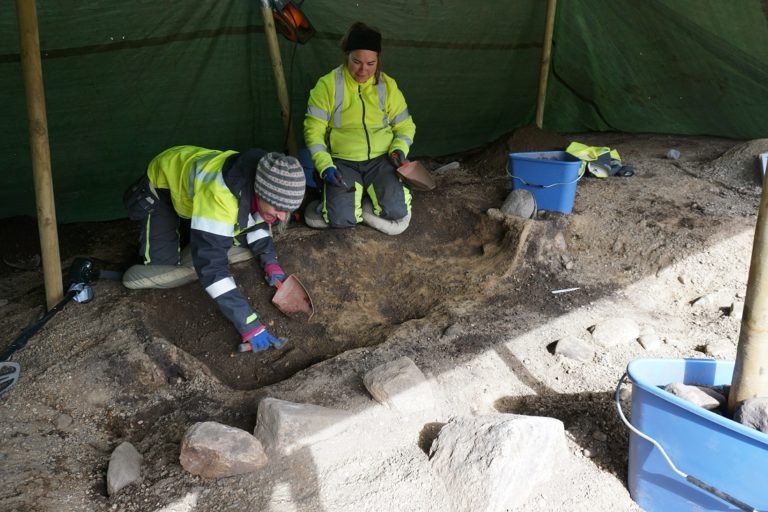
Maria Vestvik and Elise Kjørsvik from the NTNU Museum at the Viking grave. Photo: Eystein Østmoe, NTNU University Museum
“It was a big surprise. There weren’t any other graves nearby,” says Østmoe.
“And it was an even bigger surprise when the grave turned out to be something we’ve hardly ever seen before in Central Norway,” he adds.
- You might also like: Viking sword found in grave in central Norway
A burial chamber
The rectangular construction that the archaeologists found are the remains of what was once a wooden burial chamber, measuring approximately 1.7 x 1 metre, known as a chamber grave.
“This chamber grave is special, because hardly any examples of graves of this type have been found in our part of the country,” says archaeologist and project manager Raymond Sauvage.
Sauvage explains that the chamber was built in a hole in the ground. After the deceased woman was laid in it, a lid was placed on top. The grave is dated to 850 – 950 CE, and very little was left of the chamber itself after more than 1000 years underground.
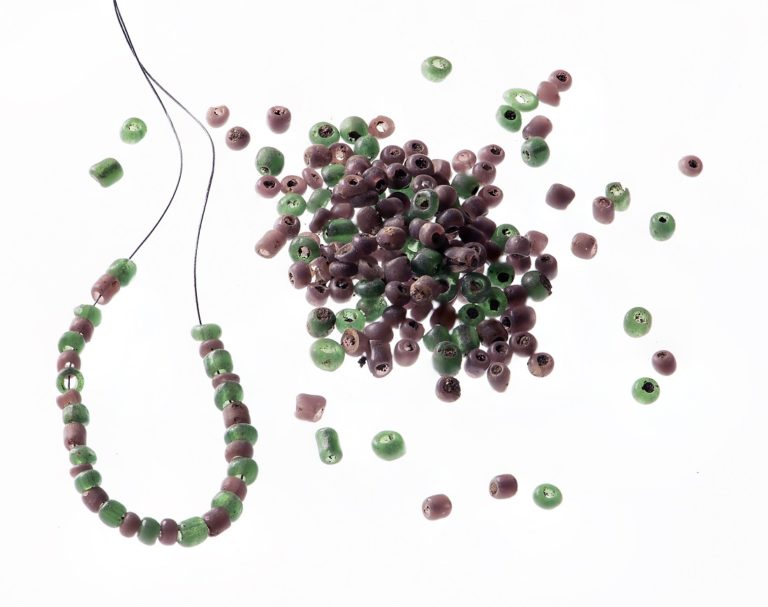
At least 339 pearls were placed with the woman in the burial chamber. Photo: Åge Hojem, NTNU University Museum
“We found imprints of the four posts that stood in each corner and some of the walls. The construction technique and size helped confirm that it’s a chamber grave,” says Sauvage.
“This type of grave is widespread mainly in Birka in Sweden, and in former Danish areas – that is, Denmark including Skåne county, south-eastern parts of Norway and Hedeby in present-day Germany.
Chamber graves seem to have been particularly popular among the first city dwellers. They are especially concentrated around the early urban centres, like Birka, Hedeby and Kaupang in Skiringssal.
“Of course you’ll find the occasional chamber grave farther up the coast, but by way of comparison, hundreds of these graves have been found in Birka,” Sauvage says.
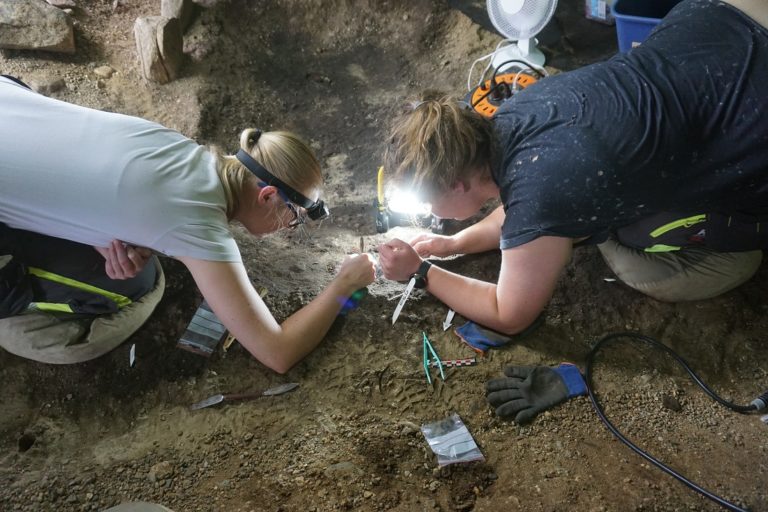
Ingvild Mjelde and Elise Kjørsvik brush away dirt to reveal the pearls. Photo: Eystein Østmoe, NTNU University Museum
Special burial gifts
More items than simply the burial chamber point to urban life. The grave goods – which tell us that the deceased was a woman – are also out of the ordinary.
“The woman was buried with a three-lobed brooch, which she used to close her sark at the neck. The brooches were originally made from Carolingian sword sheath fittings, and were then modified into jewellery in the Nordic countries. These modified fittings were later copied, and original Scandinavian variants were made,” Sauvage says.
“The brooch that was found at Hestnes is a type that’s quite rare in Norway. However, it’s typical in the Old Danish areas. It was probably produced there, perhaps in Hedeby. In Norway, brooches like this are usually found in areas that were previously Danish – in other words, roughly Viken county [in south-eastern Norway].”
Large quantities of green and purple miniature beads were also found in the grave, and so far 339 beads have been counted. All the beads are tiny, between one and two millimetres. The archaeologists actually had to buy mosquito netting to have something that was a fine enough mesh to sift the beads out of the soil.
“Finding miniature beads like these is really rare. In Isfjorden in Rauma municipality, a few such beads have been found, and some were also found in a grave in Steigen municipality [in Nordland county],” Sauvage says.
“The beads were concentrated over the woman’s right shoulder, but we don’t know if they were part of a bead necklace or something else. One find from Hedeby with similar beads was interpreted as being beads embroidery in one form or another, and we can imagine that the same could be the case here,” he says.
- You might also like: Place names describe Scandinavia in the Iron and Viking Ages
Arranged marriage?
So who was she – this woman whose final resting spot was such an urban grave, in the densest countryside in Central Norway?
“In archaeology, it’s common to think that the artefacts in the graves tell us something about the status and identity of the person who was buried. This artefact material indicates that the woman came from the south-eastern part of Scandinavia, and that she was buried according to her own cultural tradition,” says Sauvage.
We can only speculate how she ended up here, but Sauvage says she might have come to Hestnes through an arranged marriage.
“Travelling great distances and building networks over large areas is typical of the Viking Age. Alliances and friendships were the primary social glue in Viking Age society. It was through them that you built your social status and gained political power in an area. Marriage was a way to ally two families in this system,” he says.
The distances didn’t appear to be a deterrent, either.
- You might also like: Finding 1154 holes in the ground – and a riddle
Bone remains in turtle brooches
“Today we’re used to travelling big distances by plane, so we might think that people of 1000 years ago would have found travelling around the world pretty cumbersome and time consuming. But, after all, England was only a week’s journey away by boat,” says Sauvage.
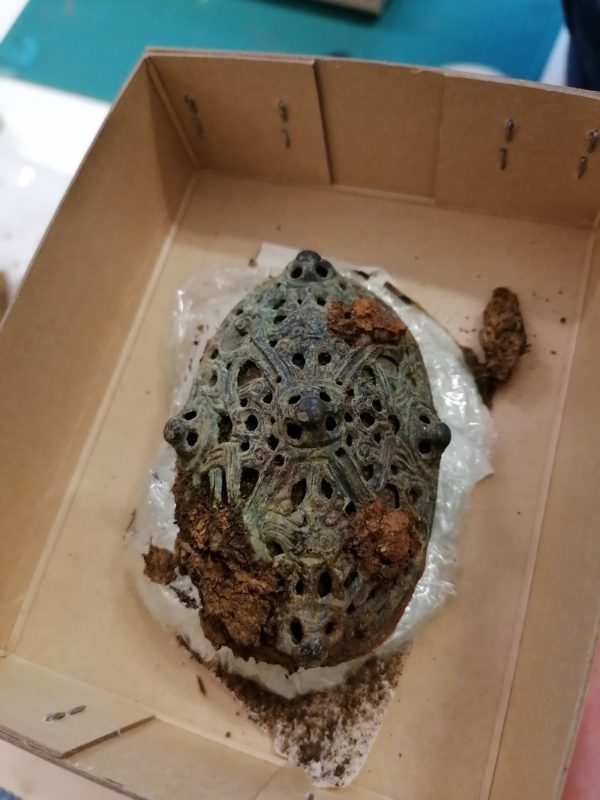
The contents of the turtle brooch might be able to tell us more about who the woman was. Photo: Eystein Østmoe, NTNU University Museum
“Travelling to Europe was completely normal, and taking a trip over to Denmark by longship was probably quite common,” he says.
The answer as to where the woman came from can perhaps be found in the turtle brooches that were also found in the grave. This type of double-shelled brooch, which held up the dress, was common throughout the Nordic countries during this period and are thus a more ordinary find. When the conservators dug out the brooches, however, they found both bone remains and teeth inside.
“If this material is well enough preserved, we’ll hopefully be able to do analyses that can tell us where the woman came from. It’s tremendously exciting!” says Sauvage.
